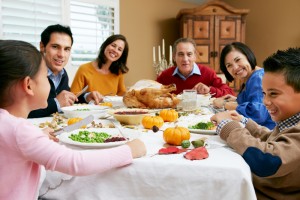Fun Books, Movies and Activities to Try
April is National Poetry Month, a great time to introduce children to poetry through books, movies and activities.
Books
“Pocket Poems,” selected by Bobbi Katz, illustrated by Marylin Hafner, is a great start for young children. The collection features short poems from famous and lesser-known poets, with child-friendly illustrations.
“The Usborne Book of Poems for Young Children,” selected by Philip Hawthorn, illustrated by Cathy Shimmen, includes poems from dozens of poets, with full-page color illustrations.
“The Bill Martin Jr. Big Book of Poetry,” edited by Martin with Michael Sampson, is a terrific overview of poems on a variety of subjects, colorfully illustrated.
“Splish Splash” by Joan Bransfield Graham, illustrated by Steve Scott, is a collection of concrete poems (poems in specific shapes), all relating to water.
“A Jar of Tiny Stars: Poems by NCTE Award-Winning Poets,” edited by Bernice E. Cullinan, highlights the best modern children’s poets.
“April Bubbles Chocolate: An ABC of Poetry,” edited by Lee Bennett Hopkins, illustrated by Barry Root, contains 26 short poems with realistic art.
“Emily Dickinson’s Letters to the World” by Jeanette Winter uses fanciful artwork to introduce children to Dickinson’s work. “Grassroots” combines poems by Carl Sandburg with nature paintings by Wendell Minor.
Movies
“Classical Baby: The Poetry Show” (2008) is a lovingly animated 23-minute video with poems by Shakespeare, John Keats, Gertrude Stein and more, read by celebrities like Gwyneth Paltrow and Susan Sarandon.
“Dr. Seuss’s Horton Hears a Who” (2008) is a playful feature animated film, with the voices of Jim Carrey, Steve Carrel and Carol Burnett, based on the children’s classic.
“A Child’s Garden of Poetry” (2011) is a 27-minute collection of poems by greats like Dickinson, Robert Louis Stevenson and Robert Frost, performed by readers like Julianne Moore and Liam Neeson, with animation and live footage of children.
Activities
Create and decorate a paper pocket to carry a short poem, using this handy template. Our librarian had children do this as well as writing rain poems by putting words inside the droplets of a printed-out picture of an umbrella in the rain.
Grade-school children may be inspired to write poems by reading “Ten-Second Rainshowers: Poems by Young People,” edited by Sandford Lyne, illustrated by Virginia Halstead. The collection features free-verse poems by children in grades 3 through 12.
Look for online interactive National Poetry Month activities for grades K-12 from ReadWriteThink.org, helping kids to write and appreciate poetry.
Originally published on the Yahoo! Contributor Network


